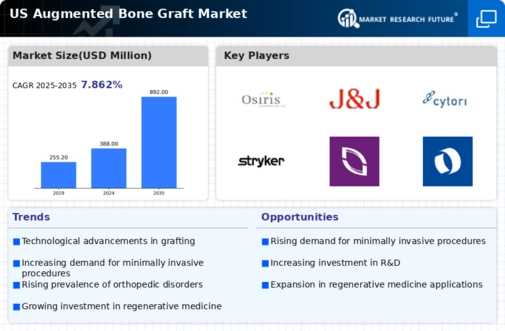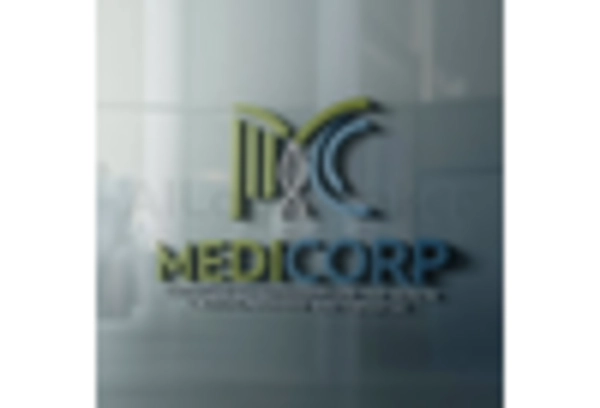Growing Awareness of Bone Health
The augmented bone-graft market is experiencing growth due to heightened awareness of bone health among the general population. Educational campaigns and initiatives by health organizations are emphasizing the importance of maintaining strong bones and preventing disorders. This increased awareness is likely to lead to more individuals seeking medical advice and treatment for bone-related issues, thereby driving demand for augmented bone-graft solutions. The augmented bone-graft market is expected to benefit from this trend, as patients become more informed about their treatment options. Additionally, healthcare providers are likely to respond to this demand by offering a wider range of bone grafting products and services. As awareness continues to grow, the market may see a corresponding increase in the adoption of advanced bone-grafting techniques.
Rising Incidence of Bone Disorders
The augmented bone-graft market is experiencing growth due to the increasing prevalence of bone disorders such as osteoporosis and fractures. In the US, the National Osteoporosis Foundation estimates that approximately 10 million individuals suffer from osteoporosis, with an additional 44 million at risk. This rising incidence necessitates effective treatment options, driving demand for advanced bone-grafting solutions. The augmented bone-graft market is poised to benefit from this trend, as healthcare providers seek innovative materials and techniques to enhance bone healing and regeneration. Furthermore, the aging population, which is more susceptible to bone-related issues, is likely to contribute to the market's expansion. As a result, the augmented bone-graft market is expected to see a significant increase in demand for products that address these medical needs.
Technological Innovations in Bone Grafting
Technological advancements play a crucial role in shaping the augmented bone-graft market. Innovations such as 3D printing and bioactive materials are revolutionizing the way bone grafts are developed and utilized. For instance, 3D printing allows for the creation of customized grafts tailored to individual patient needs, enhancing the effectiveness of surgical procedures. The augmented bone-graft market is likely to see a surge in the adoption of these technologies, as they offer improved integration with host tissues and reduced complication rates. Additionally, the introduction of smart biomaterials that can release growth factors or drugs may further enhance the healing process. As these technologies continue to evolve, they are expected to drive growth and expand the applications of augmented bone grafts in various surgical fields.
Increased Investment in Healthcare Infrastructure
The augmented bone-graft market is benefiting from increased investment in healthcare infrastructure across the US. With the ongoing expansion of hospitals and surgical centers, there is a growing demand for advanced medical technologies, including bone grafting solutions. According to the American Hospital Association, total hospital expenditures reached approximately $1 trillion in recent years, indicating a robust investment in healthcare facilities. This trend is likely to enhance the availability of augmented bone-graft products, as healthcare providers seek to offer cutting-edge treatments to their patients. Furthermore, the augmented bone-graft market may see increased collaboration between manufacturers and healthcare institutions, fostering innovation and improving patient outcomes. As healthcare infrastructure continues to develop, the market is expected to thrive, driven by the need for effective bone repair solutions.
Regulatory Support for Advanced Medical Solutions
The augmented bone-graft market is positively influenced by regulatory support for advanced medical solutions. The US Food and Drug Administration (FDA) has established pathways for the approval of innovative bone grafting products, facilitating their entry into the market. This regulatory environment encourages manufacturers to invest in research and development, leading to the introduction of novel augmented bone-graft solutions. The augmented bone-graft market is likely to benefit from this supportive framework, as it fosters innovation and enhances patient access to effective treatments. Furthermore, as regulatory bodies continue to prioritize patient safety and efficacy, the market may see an influx of high-quality products that meet stringent standards. This regulatory support is expected to drive growth and enhance the overall landscape of the augmented bone-graft market.

















Leave a Comment